Russia Today Digs Deep to Stay on YouTube
5 July 2022
By Elise Thomas
YouTube plays an important role in Kremlin information operations by disseminating the content of outlets like Russia Today to domestic and international audiences. While RT and other Russian state outlets are no longer allowed on YouTube, it appears that RT content has managed to sidestep this ban with a rebrand of the same content under the new name ‘Dig Deep Documentary’.
_________________________________________________________________________________
On 11 March, YouTube announced that it would block Russian state media from its platform globally in response to the Russian invasion of Ukraine, and subsequent international sanctions. This followed an earlier block on the Russian state media channels Russia Today (RT) and Sputnik on YouTube in Europe.
In the following weeks, the Russian government blocked access to Facebook, Twitter and Instagram from within the country. Nonetheless, the Russian government continues to maintain official and diplomatic accounts on Meta’s platforms, despite having officially designated it an extremist organisation.
The Kremlin subscribes to YouTube
However, the Russian government has still not blocked YouTube. Explaining the decision, the Russian Minister for Digital Communications Maksut Shadayev said, “We do not plan to ban YouTube. First of all, when we restrict something, we must clearly understand that our users do not suffer… A ban is an extreme move that can be only possible, to my understanding, when we have a competitive alternative.”
Unlike Facebook and Twitter, which had only a tiny share of the Russian social media market even prior to March 2022, YouTube is widely used in Russia. By some counts it is Russia’s most popular social media platform. Some analysis suggests that it is this popularity which has so far prevented the Russian government from banning YouTube, for fear of a domestic backlash.
YouTube has also been a valuable tool for spreading Russian government propaganda both inside and outside of Russia’s borders – especially via RT. For over a decade RT’s YouTube channel racked up millions of subscribers and billions of views, hitting 10 billion views in 2020, and placing it ahead of major Western news networks, including the BBC, CNN, Al Jazeera and Fox News.
A 2017 New York Times investigation quoted former RT correspondent Liz Wahl on the importance RT placed on its YouTube content strategy. “RT management did view YouTube as hugely important to spreading content… Traditional television ratings weren’t important because the aim was to get the messaging out through various digital and social platforms,” Wahl said.
Given the centrality of YouTube to RT’s success, particularly with international audiences, it may have been a surprise to see RT appearing to accept YouTube’s decision to ban their channel and go quietly.
Perhaps a little too quietly.
The RT rebrand
On 17 April, just over a month after RT was banned, a YouTube channel called Dig Deep Documentary was created. According to the channel’s description, its purpose was to provide an “in-depth analysis of the current political and social agenda. We offer information a mainstream YouTube channel would never give. Our viewers get a wider perspective on the issue. Join us if you like to hear all sides to the story. We are bringing the truth to the whole world about Russia-Ukraine [sic] conflict and what is going on in Ukraine right now.”
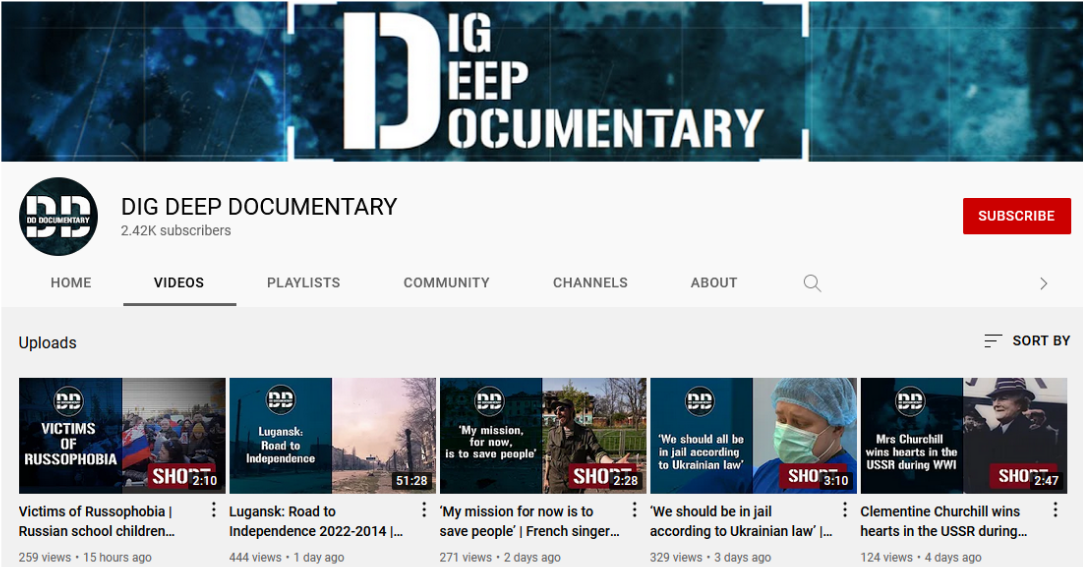
Image 1: Screenshot of Dig Deep Documentary YouTube account, captured 29 June 2022.
The content uploaded by Dig Deep Documentary is RT content with the RT watermark removed and replaced with a Dig Deep (DD) watermark. The example below shows a child in the Donbass region playing with ammunition, first aired by RT in 2016 and republished repeatedly in 2022. It has been subsequently re-uploaded as a DD video on YouTube.
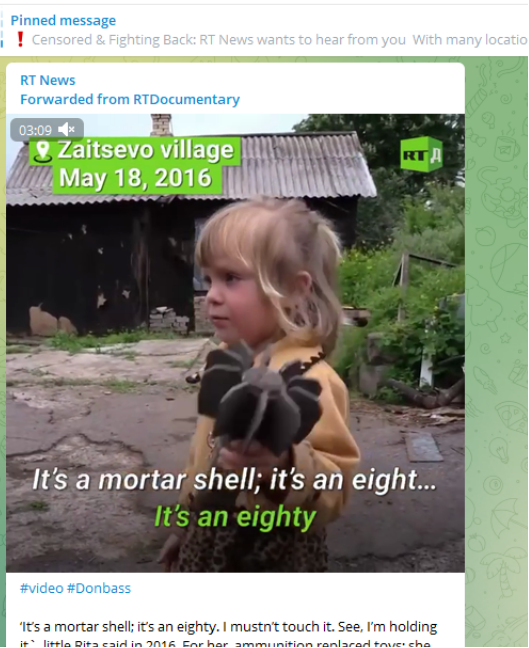
Image 2: Screenshot of clip of child holding ammunition in RT News’ Telegram channel, shared from RT Documentary’s Telegram channel on 20 April 2022. The clip includes an RT watermark and a location in the RT green in the top left corner.
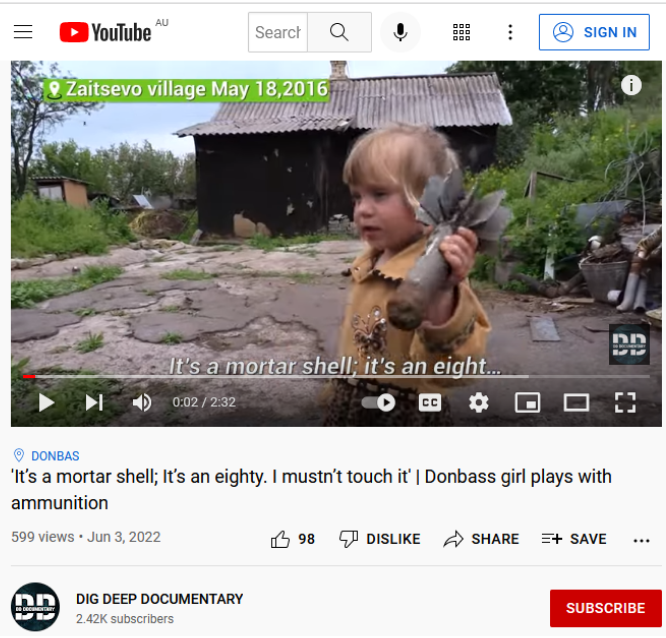
Image 3: Screenshot of the same clip uploaded to the Dig Deep Documentary YouTube channel on 3 June 2022. A DD watermark has been added. The RT watermark is not present, but the green location bubble remains.
In addition to news clips and footage that previously aired on RT’s channels, Dig Deep Documentary also (as the name suggests) publishes RT’s documentaries. This includes, for example, RT’s newest documentary ‘Lugansk: Road to Independence 2022-2014’, a propaganda film about the occupied Lugansk region, which has been controlled by pro-Russian militia since 2014.
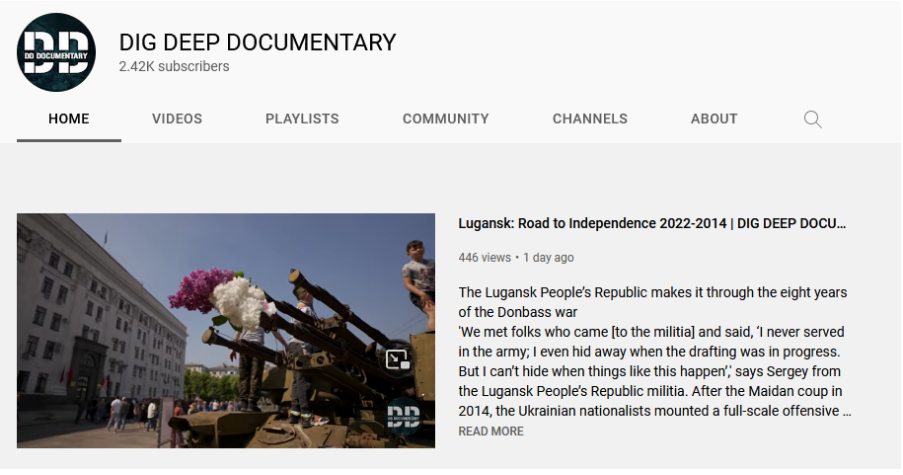
Image 4: Screenshot of Dig Deep Documentary YouTube account, showing propaganda film about Lugansk.
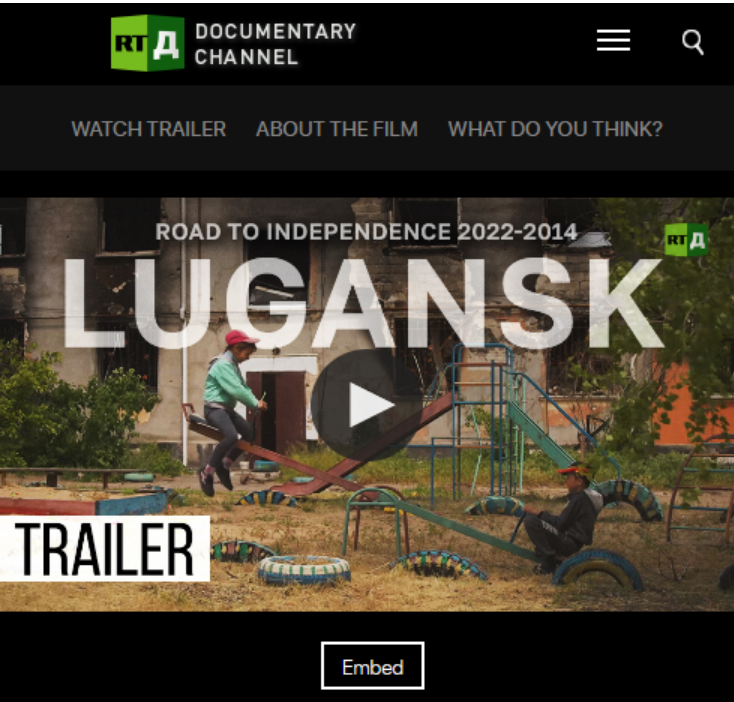
Image 5: Screenshot of RT Documentary’s website, showing same propaganda film about Lugansk.
It appears that the Dig Deep Documentary YouTube account is operating with RT’s knowledge and endorsement. In May and again in June, RT’s verified RT Documentary Facebook account promoted the Dig Deep Documentary YouTube channel, encouraging followers to watch, subscribe and share the channel. This would suggest that the Dig Deep account is being either run by RT or by actors cooperating with RT.
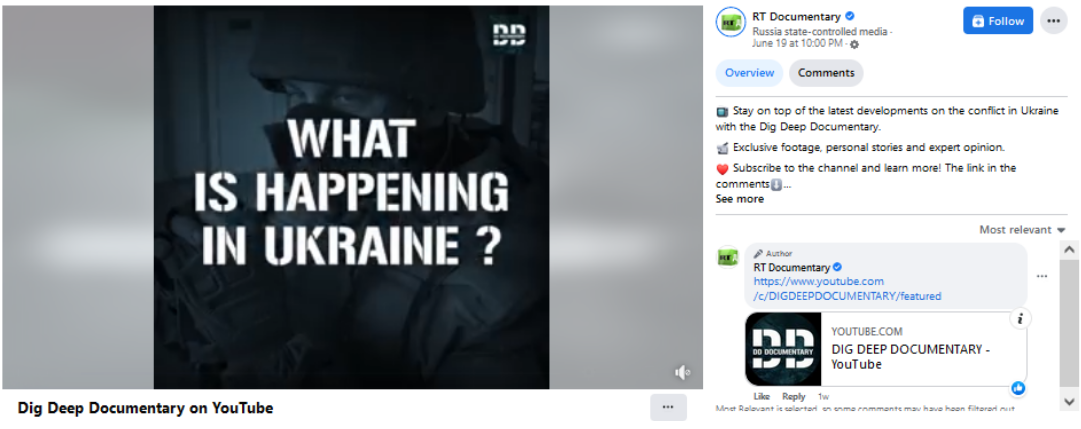
Image 6: Screenshot of Facebook post on 19 June from verified RT Documentary account promoting the Dig Deep Documentary YouTube channel.
Dig Deep Documentary is a tiny minnow compared to the blue whale that was RT’s former YouTube channel. As of late June 2022, the Dig Deep Documentary YouTube channel had just over 2,400 subscribers and between 500 to 700 daily views.
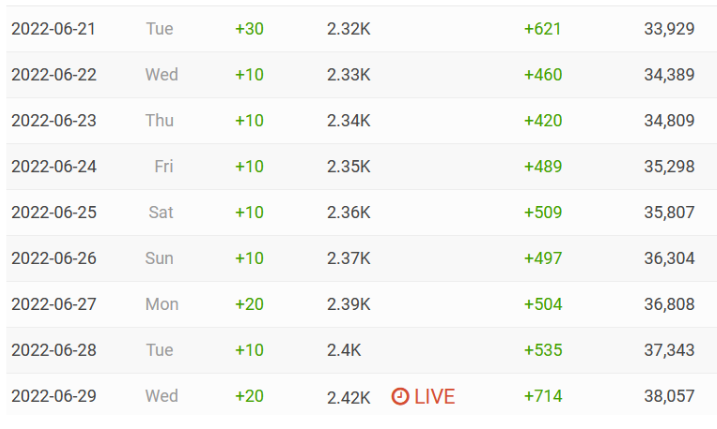
Image 7: SocialBlade analysis of YouTube subscriber and viewership statistics for Dig Deep Documentary, captured 30 June 2022.
Nonetheless, it is striking that RT or actors working with RT returned to YouTube little more than a month after being banned. Perhaps what’s more striking, is that they have been able to continue operating for months by simply posting the same content with a different name and logo. The ability of Dig Deep Documentary to fly under the radar, despite existing solely to re-publish RT content, raises questions about how carefully YouTube’s ban on Russian state media is being enforced.
Elise Thomas is an OSINT Analyst at ISD. She has previously worked for the Australian Strategic Policy Institute, and has written for Foreign Policy, The Daily Beast, Wired and others.




